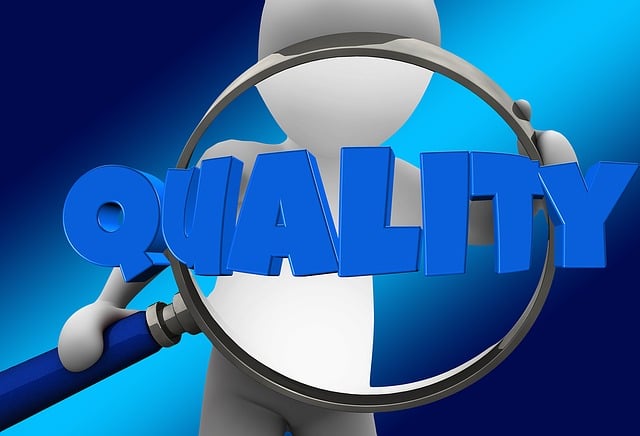In today's competitive e-commerce landscape, successful businesses leverage advanced best ecommerce chatbots to enhance customer interactions and drive sales. These chatbots offer instant support, personalized recommendations, and efficient order tracking through seamless integration with existing systems for accurate inventory updates and data collection. Choosing the right chatbot platform is crucial, offering options from simple rule-based bots to complex AI models with NLP capabilities. Effective conversational flows tailored to user personas and regular training with machine learning algorithms ensure high performance. Measuring key metrics like response accuracy and user satisfaction guides continuous optimization, ensuring best ecommerce chatbots remain dynamic and effective in driving customer satisfaction and sales.
Building a chatbot can transform your e-commerce platform, enhancing customer engagement and driving sales. This comprehensive guide explores the step-by-step process of creating an effective best ecommerce chatbot. From understanding your target audience’s needs and integrating the right platform to designing intuitive conversational flows and training with quality data, each section provides valuable insights. Discover how to measure performance, optimize interactions, and continuously improve your chatbot for maximum impact.
- Understanding Ecommerce Chatbot Needs and Integration
- Choosing the Right Chatbot Platform for Your Business
- Designing Conversational Flows and User Personas
- Training and Implementing Your Chatbot with Quality Data
- Measuring Performance, Optimization, and Continuous Improvement
Understanding Ecommerce Chatbot Needs and Integration

In today’s digital landscape, understanding the unique needs of an e-commerce platform is paramount when building a chatbot. E-commerce chatbots serve as game changers, enhancing customer experience and driving sales by providing instant support, product recommendations, and efficient order tracking. They can offer personalized interactions, answer frequently asked questions, and even facilitate post-purchase tasks, all while freeing up human agents to handle more complex issues.
Integration is key when it comes to best ecommerce chatbots. A seamless integration with existing e-commerce systems ensures that data flows smoothly between the chatbot platform and the store’s backend, enabling accurate inventory updates, order management, and customer profile access. This integration also facilitates the collection of valuable customer data, which can be used for targeted marketing campaigns, further personalizing the shopping experience and increasing customer satisfaction among users interacting with top ecommerce chatbots.
Choosing the Right Chatbot Platform for Your Business

When deciding on building a chatbot, one of the critical initial steps is selecting the right platform to host and develop it. This choice significantly impacts your chatbot’s performance, scalability, and integration capabilities, especially for businesses in the e-commerce sector looking for best ecommerce chatbots. Different platforms cater to various needs, from simple rule-based bots to advanced AI models.
For instance, some platforms offer pre-built templates and user-friendly interfaces, making them ideal for startups or small businesses with limited technical resources. Conversely, more robust and customizable options are suitable for enterprises seeking complex conversational AI solutions. Key factors to consider include the platform’s natural language processing (NLP) capabilities, integration with existing systems like CRM and e-commerce platforms, and its ability to handle high user volumes without compromising performance, which is crucial for successful best ecommerce chatbots.
Designing Conversational Flows and User Personas

Designing effective conversational flows is a critical step in building any chatbot, especially for best ecommerce chatbots. This involves creating scenarios and dialogues that mirror natural human interactions. Start by outlining user personas—representative users with distinct needs and preferences. For instance, a buyer looking to compare products might have a different conversation path from someone seeking customer support. Each persona guides the development of tailored responses, ensuring your chatbot provides relevant, engaging interactions.
Consider common user queries and the ideal flow of a conversation. Will users navigate through menus or speak freely? Designing for both structured and unstructured conversations allows flexibility while maintaining a coherent experience. For ecommerce chatbots, this could mean guiding users from product discovery to purchase, offering recommendations, addressing concerns, and handling post-purchase queries seamlessly.
Training and Implementing Your Chatbot with Quality Data

Training a chatbot with quality data is paramount for its performance and accuracy, especially in competitive industries like e-commerce where customers expect instant, precise responses. The first step involves gathering diverse yet relevant datasets that cover various customer queries and scenarios. This includes frequently asked questions, product descriptions, purchase workflows, and even potential edge cases to ensure the chatbot can handle a wide array of interactions.
Implementing this data training process effectively means employing robust machine learning techniques, such as natural language processing (NLP), to teach the chatbot to understand context, intent, and user sentiment. Regular updates with new data are crucial to keep the best ecommerce chatbots sharp, allowing them to adapt to evolving customer needs and market trends, ultimately enhancing the user experience.
Measuring Performance, Optimization, and Continuous Improvement

Measuring performance is a critical aspect of chatbot development, especially for best ecommerce chatbots designed to enhance customer experiences and drive sales. Key metrics include response accuracy, conversation time, and user satisfaction ratings. By tracking these indicators, developers can identify areas where the chatbot excels or falls short. Optimization involves refining the chatbot’s algorithms, expanding its knowledge base, and improving its ability to understand natural language queries. Continuous improvement is an ongoing process that leverages feedback from users and analytics data to iteratively enhance the chatbot’s performance, ensuring it remains effective in a dynamic market. Regular updates and fine-tuning are essential for maintaining high levels of customer satisfaction among users interacting with best ecommerce chatbots.
Building a chatbot for your ecommerce platform can significantly enhance customer engagement and satisfaction. By understanding your target audience’s needs, choosing the right platform, designing intuitive conversations, and continually optimizing performance, you can create one of the best ecommerce chatbots on the market. Remember, quality data is key to training an effective chatbot that provides value to both customers and businesses alike.
